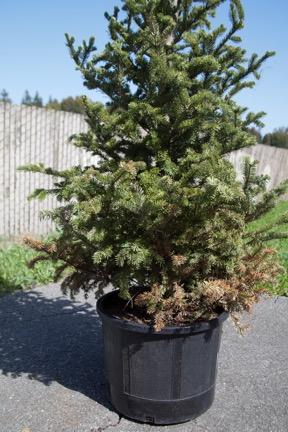Winter 2015: Potential impact of El Niño on Phytophthora diseases
Regional Report for Santa Cruz and Monterey Counties by Steve Tjosvold
El Niño conditions in the Monterey Bay area this winter are predicted to bring above average rainfall, which can come in drenching rains that flood and waterlog soils for extended periods. At the same time, winter air temperatures are predicted to be warmer than normal and consequently soil temperatures will be too. So, what impact might this have on plant diseases? At least one important group of plant pathogens might be favored by these conditions. Phytophthora are fungus-like pathogens that develop particularly well in wet conditions and some species, such as P. cinnamomi, do best in moderately warm conditions. They all need water to reproduce, spread and infect plants. During rain downpours, infested soil or spores can move readily in water runoff and splashing water. Waterlogged soil predispose nursery plants to root and root-crown infection caused by Phytophthora cactorum, P. tentaculata and other soil-borne Phytophthora species. The longer leaf wetness periods will favor the production of aerial spores and infection of P. ramorum (causing sudden oak death) and P. infestans (causing potato and tomato late blight), as well as other species that mostly attack and develop in aboveground portions of the plant.
Many Phytophthora species cause destructive crown and root rot diseases of herbaceous and woody plants in landscapes and nurseries. The leaves of plants affected by Phytophthora root or crown rot can first appear drought stressed. Leaves may turn dull green, yellow, brown, or in some cases, red or purplish (fig. 1).
Fig. 1. Aboveground symptoms of Phytophthora root rot can include wilting, yellowing and browning of foliage. Root rot symptoms of this fir tree are shown in fig 3. Photo: S. A. Tjosvold.
Plants often wilt and die rapidly with the first warm weather of the season. Phytophthora species can infect small and large roots, turning them brown and soft, and rendering them useless to the plant (fig. 2). Roots at the bottom of the nursery pot are frequently first infected (fig. 3). Infection of the bases of stems or root crowns is possible when transplants are planted too deeply. Often root and crown rot diseases are first noticed in the most susceptible plant species, in the most poorly drained area of the nursery, or in pots that have poor quality soil. Some Phytophthora species, such as P. ramorum, P. infestans and P. nicotianae, cause various plant blights. Although hosts of P. ramorum show a range of symptoms, in general the disease is characterized by irregular necrotic leaf lesions, rather than distinct leaf spots. Leaf infections can develop down the petiole and into twigs. Often, such as in camellia, infected leaves fall off before the lesion reaches the petiole. Infections may occur initially on stems or move into stems and cause blights in which stems and associated leaves wilt, become necrotic and die. A distinct dark line can mark the advance of the infection on some species.
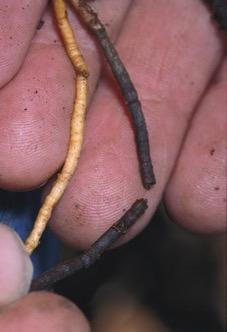
Fig. 2. Roots infected with Phytophthora (right) as compared to healthy root (left). Photo: J.K. Clark.
Phytophthora species can produce reproductive structures such as oospores, sporangia, chlamydospores and zoospores that are capable of infecting susceptible host tissue at their target site. Oospores are sexually-derived, heavily-walled spores that can survive for many months to years in infected roots or infested plant debris. Chlamydospores are asexual spores that are usually heavily walled and also are long-lived. Both are capable of direct infection of roots. Sporangia and zoospores can be produced from infected tissue when environmental conditions are favorable. Sporangia can directly infect host target sites, but they also produce and release zoospores capable of swimming in free water. Although these spores are ephemeral, they are capable of rapid production and dispersal, and can quickly spread the disease when water and temperature conditions are favorable.
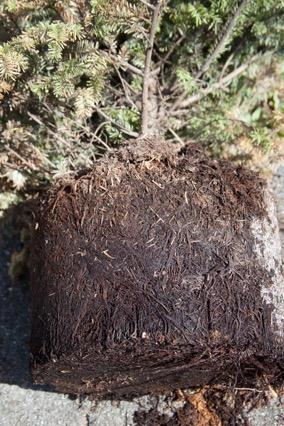
Fig. 3. Root ball of the fir tree shown in fig. 1. Often the roots at the bottom of the nursery pot are first infected. Photo: S. A. Tjosvold.
Often the best way to identify a plant disease is to have representative plant samples sent to a plant pathology laboratory. The plant pathologist can identify the cause of the disease by finding existing spores or other tell-tale signs, or by isolating the causal organism on media. There are several field test kits that can help the field scout or farm manager to identify many common diseases, including Phytophthora (fig. 4). And it only takes minutes to conduct a test. These tests can sometime react to the closely related Pythium species and, as with any diagnostic procedure, the accuracy of the test is only as good as the plant sample taken.
See http://ucanr.edu/sites/UCNFAnews/Regional_Report_Santa_Cruz_Monterey_Cos/Spring_2015_Pathogen_field_test_kits/.
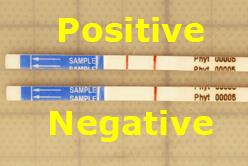
Fig. 4. Agdia Phytophthora ImmunoStrip. Photo: UC Berkeley Forest Pathology and Mycology Laboratory.
Prevention is the key to management of diseases caused by Phytophthora. Start with a sterile planting mix, use clean containers and keep pots up off the ground to avoid contact with existing soil. Gravel nursery beds allow for drainage away from the pots and can eliminate standing water. Don’t transplant too deeply because soil covering the base of the stem encourages infection by Phytophthora. Avoid irrigation practices that wet the foliage for prolonged periods. If sprinklers are used, irrigate in the morning to allow for thorough and quick drying of foliage. Prudent irrigation scheduling is important to minimize water stress, over-watering and salt accumulation in the soil. These factors can predispose plants to Phytophthora infection. Root media should drain well, providing at least 10% air-filled pore space after drainage. Avoid mixes that have inadequately composted components because they can break down quickly; the mix settles and loses air-filled pore space (fig. 5), in addition to potentially causing nitrogen deficiency problems.
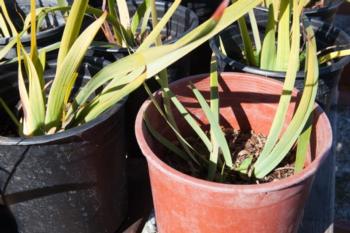
Fig. 5. Root media that contain inadequately composted components break down too quickly, which compacts the media leaving less air-filled pore space. Plants in this container potting mix are more susceptible to Phytophthora root rot. Photo: S. A. Tjosvold.
Several fungicides help control Phytophthora diseases, but the most effective fungicide treatments are those that are specifically active on Phytophthora and related species. However, the regular and blanket use of these fungicides encourages the development of resistant strains. Rotation of fungicides with different modes of action is especially important to reduce the chance of resistance from occurring. A good rotation strategy should also attack different susceptible stages of the Phytophthora life cycle.
Steven A. Tjosvold Farm Advisor
Environmental Horticulture UC Cooperative Extension
Santa Cruz County 1432 Freedom Boulevard Watsonville, CA 95076-2796
(831) 763-8013 phone (831) 763-8006 fax
satjosvold@ucdavis.edu








